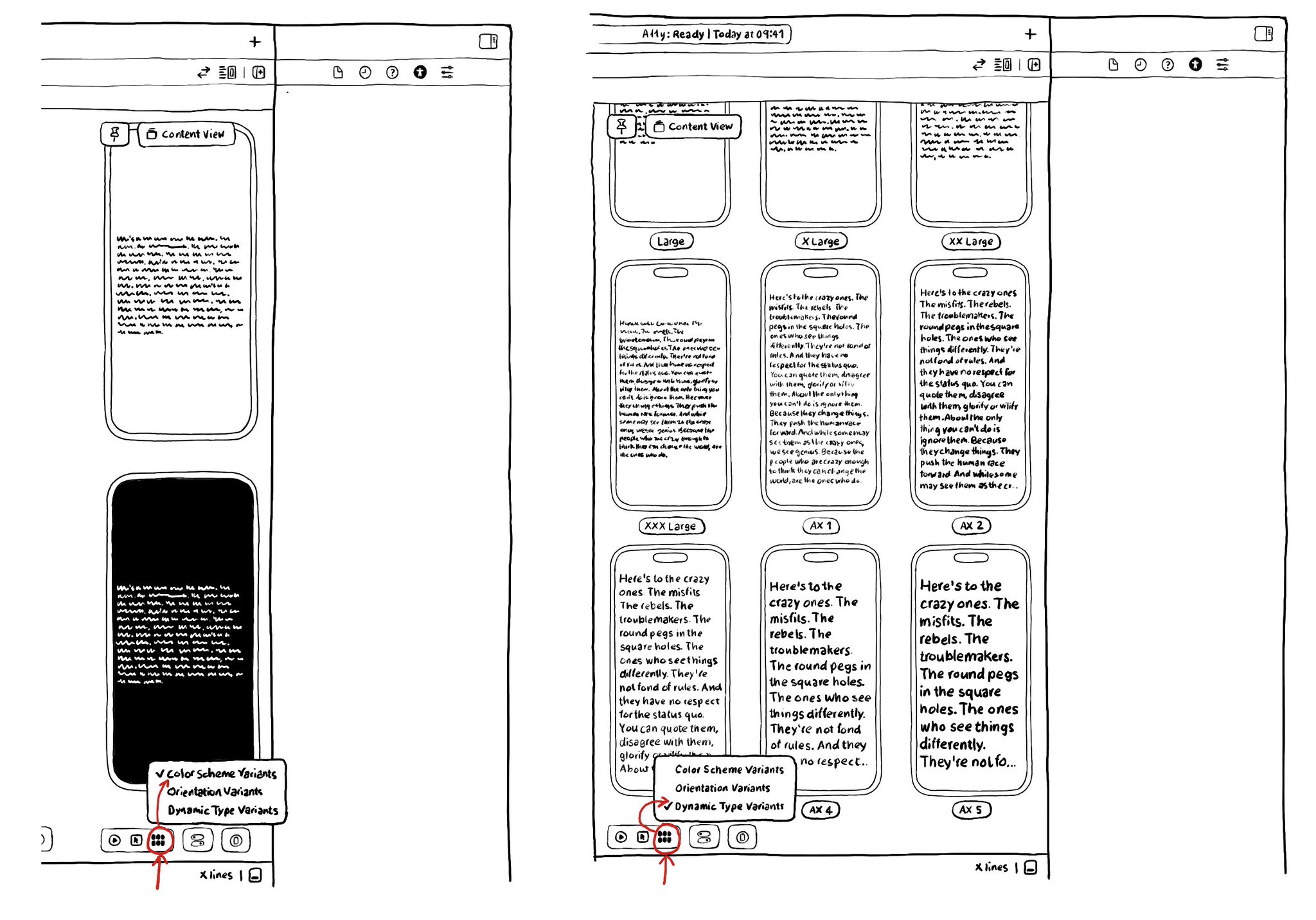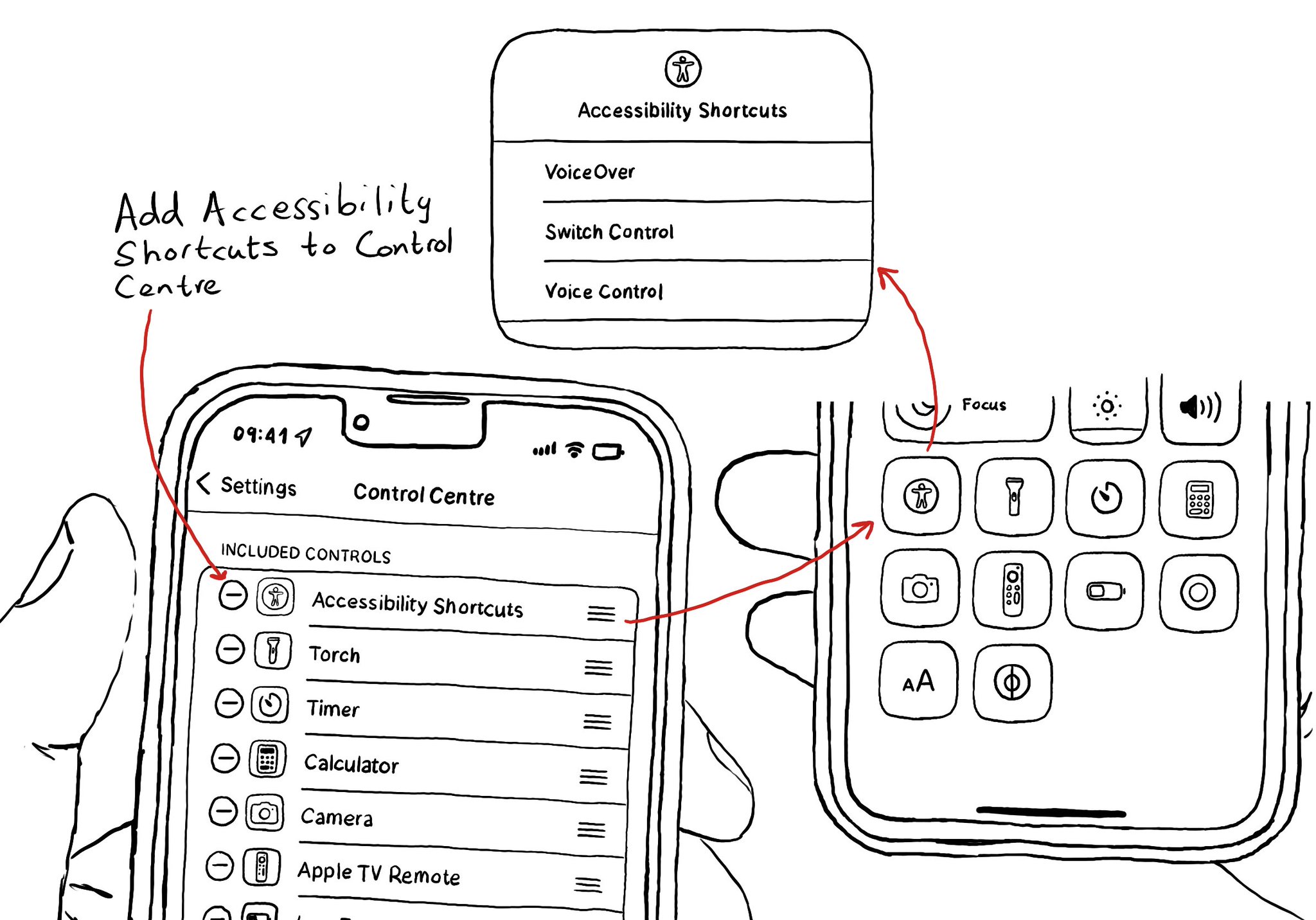Ever wondered what the ideal width is for labels so the text is readable? Well, it depends. But readableContentGuide has you covered. You can configure the optimal width independently of Dynamic Type size or Size Classes.
https://developer.apple.com/documentation/uikit/uiview/readablecontentguide

You may also find interesting...

There are a ton of things to love about SwiftUI. But one of my favorites it's got to be the possibility of previewing Variants: the possibility of seeing your UI in dark/light modes, all dynamic type sizes, and orientations, side-by-side.
Check isReduceTransparencyEnabled to lower transparency. A great example is Spotlight. Not only transparency is removed but it keeps the main color of the background, it feels personalized and contextual but reduces noise and improves contrast.

You can add your Accessibility Shortcuts to Control Centre too. One more quick access point and one more reminder to get you testing often and quickly. How to enable Accessibility shortcuts: https://x.com/dadederk/status/1583519154165800960?s=61&t=_fK9Muzu2MyFEeJLVQZcJg